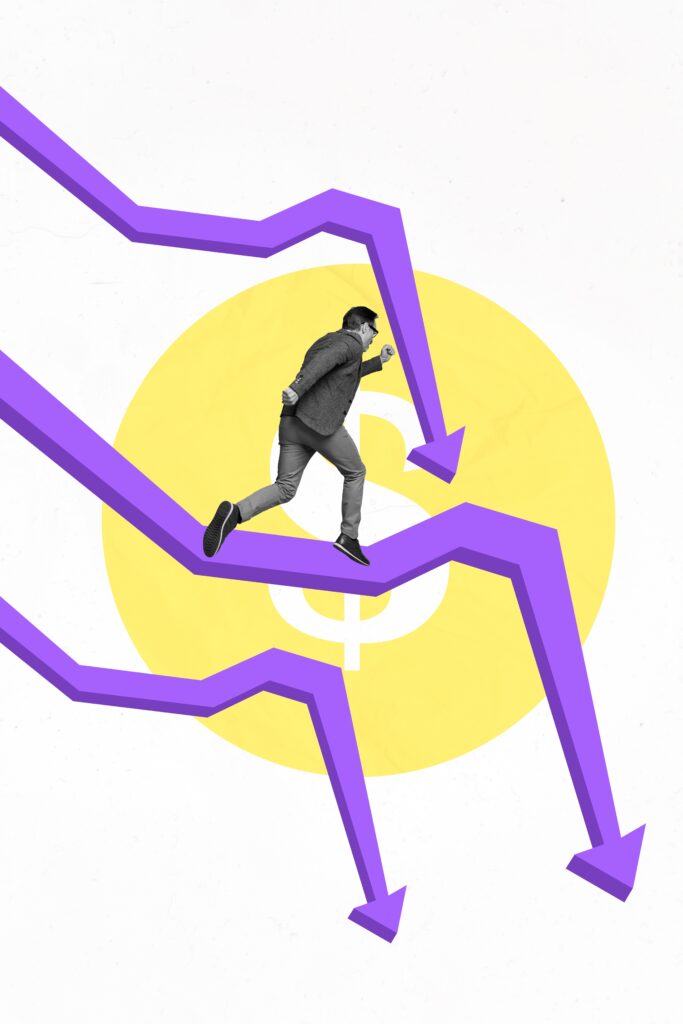After a Turbulent 2022, is Bitcoin Set to Explode in 2023?
As we approach the end of Q1 2023, the crypto market is beginning to show signs of life after a tumultuous year in 2022. For Bitcoin, specifically, the journey has been a rollercoaster ride, with Bitcoin falling by 75% from its all-time high in 2021.
However, recent trends suggest that Bitcoin is starting to recover, and investors are looking toward the future with renewed optimism.
In this blog post, we’ll take a closer look at Bitcoin’s performance in 2022 and examine future projections for 2023, including the factors that could impact its growth and potential challenges that may lie ahead.
Bitcoin’s Performance in 2022
Bitcoin, and the entire crypto and NFT space, experienced a historic peak in 2021 when Bitcoin reached an all-time high of $69,000. However, the price surge was short-lived, as Bitcoin started to plummet shortly after, entering a bear run in the early months of 2022 due to inflation, rising interest rates, and the overall downturn of the global economy.

In May 2022, the Terra-Luna crash caused one of the biggest crashes in crypto history, which shook the entire industry and accelerated the bear run. Bitcoin’s price dropped from around $37,000-$38,000 to $31,000 by the end of the month. In the following months, Bitcoin’s price continued to plummet and was trading between $20,000-$25,000.
In November, the FTX collapse, one of the biggest scandals in the finance world, dealt the final blow, causing Bitcoin’s price to fall to $16,000-$17,000. This was a 75% decrease from the all-time high in 2021 and a 57% fall from its price at the start of the year.
Overall, the impact was felt not only by Bitcoin but by the overall crypto market. Ethereum fell from its all-time high of $4891 in 2021 to $993 in July 2022, a 79% decrease.
2022 also saw the biggest year for crypto hacks, especially for DeFi. Hackers and cyber attacks stole over $3.8 billion worth of crypto.
Compared to the 2018 crypto crash, 2022 was the second-worst year for Bitcoin. However, Bitcoin recovered relatively quickly in the next 2-3 years after the 2018 crash. The question remains whether we can expect the same for the 2022 crash.
Bitcoin Investor Sentiments in 2022
In 2022, Bitcoin investor sentiments were a mixed bag. While some investors were selling off their digital assets in a panic, others believed that the bull run was only temporary. Despite a 75% inflow in digital assets for short-term investments, it’s safe to say that overall, the sentiments were negative.
However, it’s important to note that an increase in short positions for Bitcoin wasn’t necessarily a consequence of falling prices. In fact, it could be the opposite – an increase in short positions may have contributed to the falling prices.
That being said, given the overall economic downturn and multiple setbacks for the crypto industry in 2022, it’s fair to assume that the increase in short positions and the subsequent drop in prices were, for the most part, a consequence of the declining market. Though it’s true that this may have created a negative snowball effect for the market.
Throughout 2022, experts had varying takes and opinions on the state of the crypto industry. Some, like Charlie Silver, founder of Permission.io, saw the bear market as good. Silver told Insider that it reset valuations to reality and got rid of bad actors.
Marcus Sotiriou, from GlobalBlock, echoed this sentiment, saying that despite the short-term debacle, the crypto industry would become more efficient in the long run as irresponsible companies were removed from the space.
On the other hand, some believed that the bear market signaled the end of the “crypto bubble,” likening it to the dot-com bubble in the 2000s.
However, experts like Dante Disparte recognized that cryptography and blockchains would remain integral parts of the modern economic toolkit, despite the harm they may have caused when wielded by the wrong people. Ultimately, the countries that enable responsible competition will shape the future of the industry.
Bitcoin’s Outlook for 2023
2022 was a tough year for Bitcoin, but it seems to be making a comeback. As of now, the leading cryptocurrency is trading at $29,441, marking an impressive 88% increase from its all-time low of $15,599 in 2022 and a solid 77% rise from its price of $16,619 at the beginning of 2023.
While these figures are optimistic, it’s worth noting that Bitcoin’s current price is still down by 57% from its peak of $69,000 in 2021. Nevertheless, the cryptocurrency market is showing signs of steady growth, and it’s safe to assume that Bitcoin will continue to rise above $30,000 in the coming months.
Or not?
What are the Experts Saying?
Crypto and investing experts hold varying opinions on the outlook for Bitcoin in 2023, some of which are very controversial.

Some are confident that it will surpass its all-time high. For instance, in a recent interview with CNBC, Paolo Ardoino, CTO of Tether, suggested that Bitcoin may “retest” its peak of $69,000 this year, citing the current geopolitical uncertainties and the banking crisis, referring to the recent Silicon Valley bank collapse.
Adoino added that he believes Bitcoin has the potential to act as a hedge against economic instability. This is contrary to popular belief that suggests crypto prices will decline with greater threats of a potential recession.
Marshall Beard, CSO of Gemini, goes a step further, saying that $100,000 is an “interesting” number and a possibility if Bitcoin reaches its all-time high this year.
On a more extreme end of the spectrum, Balaji Srivansan made a bet on 18 March, offering a Twitter user $1 million if Bitcoin fails to hit $1 million in the next 90 days. Here is the complete Twitter thread.
Unsurprisingly, most experts didn’t take it seriously, as they believe it might take Bitcoin another decade before it reaches $1 million, assuming nothing goes wrong.
On the other hand, some experts believe that Bitcoin may continue to struggle in 2023. Mark Mobius, who correctly predicted the crypto winter in 2022, predicts that the downturn will persist and prices could fall below $10,000. Standard Chartered Bank also forecasts that Bitcoin could fall below the $5,000 mark due to rising inflation and interest rates.
It is important to note that these predictions were made during the peak of the crypto winter in December last year.
While the idea of Bitcoin reaching $1 million in the next 90 days is far-fetched, and it’s ambitious to expect it to cross $100,000, the $30,000-$40,000 range is a more realistic expectation for Bitcoin this year. Hence, investors must maintain a realistic and balanced view.
Ultimately, you should only invest in Bitcoin based on your individual situation, income, and risk appetite. So, keep a close eye on the trends and invest wisely.